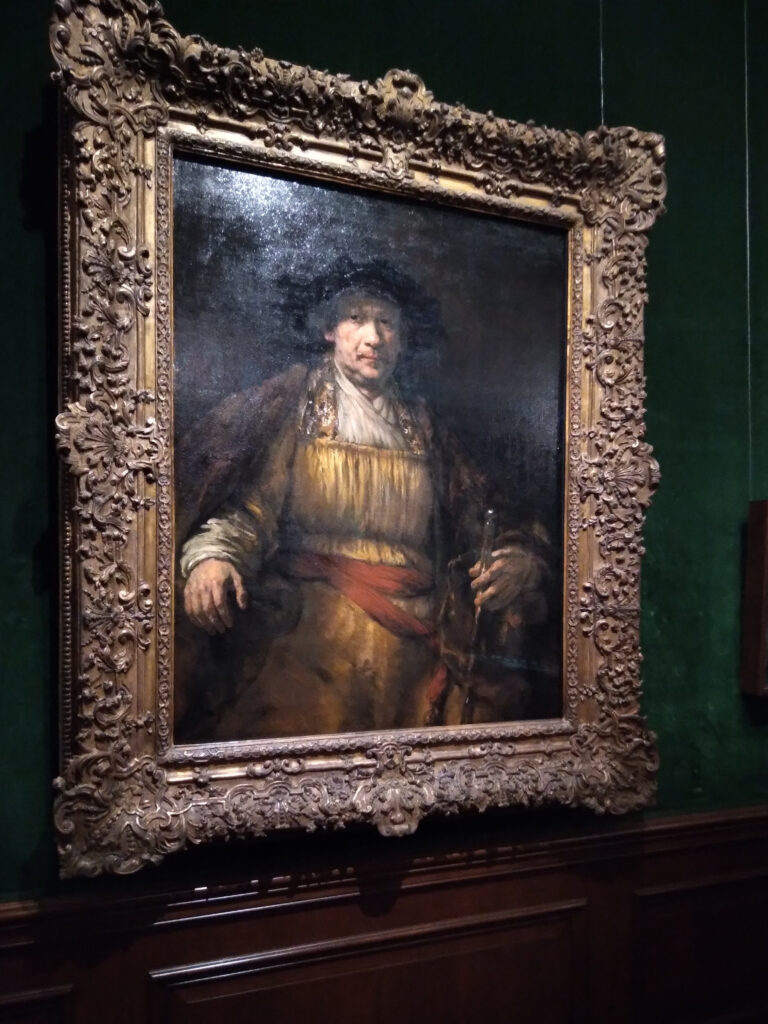An object.
As you leave the exhibit, you come to this sign, in which the museum apologizes for making you suffer through all that art. We duplicate it here for the purpose of comment and criticism.
Epilogue. As single-collector institutions, The Frick Pittsburgh and The Frick Collection are invariably linked to their individual founders. Both museums originate from a place of privilege, built on the backs of laborers in western Pennsylvania. Although genuine in the impetus to create something for the public good, many of the principles that guided the founding of our institutions no longer ring true. Today, museums strive to be centers of creativity, thought, and conversation, rather than temples of objects chosen by (and to represent) an elite few.
Here are a few essay questions on our assigned reading.
1. If museums are not to be temples of objects, then where should the objects be?
2. If the objects in museums are not to be chosen by an elite few—for example, by the vanishingly small number of intellectuals who have studied the history of art—then by what sort of democratic referendum are they to be chosen?
3. What will happen to the objects once we succeed in transforming our museums into centers of creativity, thought, and conversation? Will the objects go back into the hands of private collectors who will exclude the general public from viewing them?
4. If a museum is to be a center of creativity, thought, and conversation, how is it different from a coffeehouse? Is it just that the coffee is worse?
Dr. Boli will be very straightforward here. In his opinion, this is simple old-fashioned Yankee anti-intellectualism dressed up as fashionably enlightened righteousness. It is as silly to say that the “elite few” should not choose art as it is to say that a trained auto mechanic should not rebuild your transmission, or that a trained surgeon should not remove your appendix. What, you think I’m not good enough to perform an appendectomy? Just because I’m a cashier at the Circle K? I thought we were done with that kind of snobbery. It’s so nineteenth century.
It is also particularly antidemocratic anti-intellectualism, because of course the logical consequence of abandoning the idea of the museum as “a temple of objects” is that the δῆμος shall no longer have access to the objects. In the Frick Pittsburgh’s permanent collection you can see a colossal landscape by Boucher, and a portrait by Reynolds, and another by Gainsborough, and a whole room of early Italian Renaissance devotional art, and it’s free, because Helen Frick endowed the museum so that the public could always have free access to her art collection. The cleansing of the temple would mean that the art student who had taste but no money would no longer have that privilege.
What would our hypothetical impoverished art student see instead? Beside the “Epilogue” was a station with a table where visitors could think, exercise their creativity, and join the conversation by writing their thoughts on sticky notes and sticking them on the wall. This is what you should see in a museum, instead of stuffy old Rembrandt, who looks sad for some reason.
One of the questions you could choose to answer on sticky notes was “What would you like to see in a museum?” After thinking for a while, Dr. Boli picked up a pencil and wrote, “A temple of objects, chosen by an elite few.”
Portrait of a Man in a Red Hat, by Titian.


